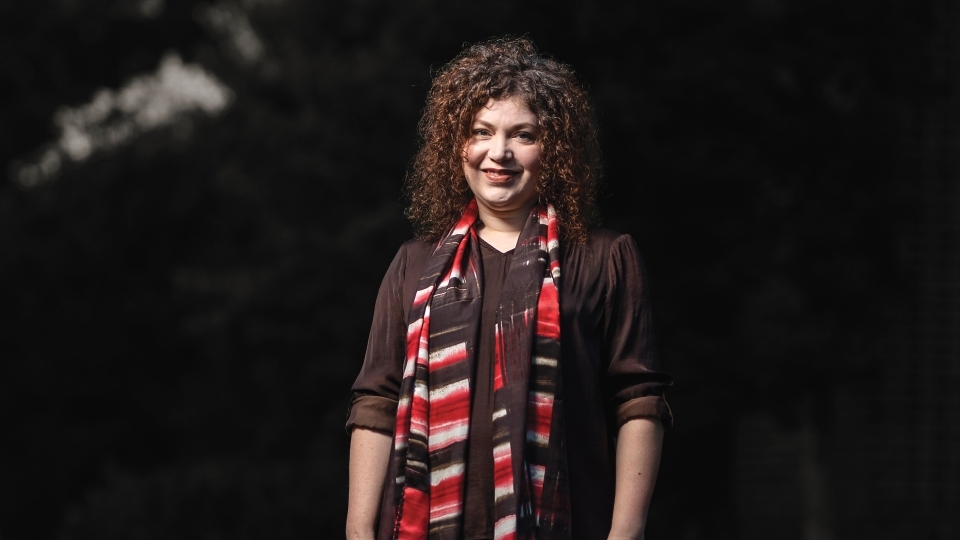Here All Along: Enslaved Women and Domestic Workers Shaped Life at Davidson
April 1, 2021
- Author
- Mary Elizabeth DeAngelis

Rose Stremlau, Associate Professor of History
Enslaved women and domestic workers were often invisible in Davidson College’s official accounts of its history.
Sometimes they’re identified only by their race, age and gender; such as a Black, 25-year-old woman, listed on a “slave schedule.” Sometimes they’re known only by their husband’s surname, and as “Mrs.”
They washed, cooked, cleaned and sewed for students and faculty. They helped raise white children, from bathing and supervising to wet-nursing. They kept the college and its households running; first as enslaved people, and later as paid domestic workers.
Associate Professor of History Rose Stremlau and her students have been working to show how people typically excluded from institutional histories, including women—white, Black, enslaved and free—influenced and shaped what was once an all-male college. Their initiative, “Inclusive Histories of Davidson College,” is a work in progress, with a website up and evolving.
The project began in one of Stremlau’s U.S. women’s history courses as a platform to identify how women had been left out of Davidson’s historical master narrative, and to help students expand their research, writing and analytical experience. It’s since grown to include other topics, such as LGBTQ presence and Black student leadership, and to challenge Davidson College’s history as being built by and for white men only.
“Formal histories of most institutions emphasize the leadership of male founders, administrators, trustees and faculty. While understanding their work is important, we also need to know how the presence and participation of everyone else shaped this community into the one we know today,” Stremlau says. “Women were always here, and they significantly shaped the way that men experienced this campus.”
Stremlau focuses extensively on enslavement in one of her women’s history courses. She says many people misunderstand how pervasive slavery was in the Carolinas; and how men and women experienced it differently. Many assume slavery’s impact was limited at Davidson because the college didn’t own slaves, and the region didn’t have sprawling cotton plantations, she says.
“They think because this wasn’t the Mississippi Black Belt, and that local plantations didn’t resemble Tara in Gone with the Wind, slavery was somehow ‘less’ or more benevolent here,” she says. “This region offers a snapshot of the diversity of how enslaved people lived and worked and how white men and women exploited their labor and maintained power over them. In Davidson, enslaved people, especially women, worked side by side in homes and businesses with white women.”
Unlike large plantations, where enslaved people could find comfort in family and community, an enslaved woman in Davidson might be the only unfree laborer in a household; separated from her spouse and children.
“How lonely and tragic to have to care for other women’s children while being denied the ability to mother one’s own. That was the reality of slavery in the homes of white faculty and administrators in college towns across the antebellum South,” Stremlau says. “And even after slavery ended, Black women were still doing so much of that work for the college. They made possible all the accomplishments we read about.”
Her students have written short essays about the lives of women and others ignored in traditional accounts of Davidson’s history. Stremlau and students are developing a map to go along with a campus tour, where readers will find the essays connecting them with the archives and complex history.
Mary Lacy, wife of the college’s third president, Drury Lacy, spent much of her time entertaining important college guests and benefactors. Enslaved women performed the Lacys’ household chores and took care of their children, according to her letters, which Stremlau and her students used for their research. The Lacys’ home stood on the land that now houses the Tom and Katherine Belk Visual Arts Center.
The Carolina Inn, now an academic meeting space, was once the Helper Hotel. Businessman Hanson P. Helper owned the hotel, but his first and second wives, daughters, and enslaved women washed, cleaned and cooked.
And the list goes on.
Isabel Padalecki ’22, a Belk Scholar and gender and sexuality studies and history major from Wake Forest, North Carolina, has been writing new essays and editing existing ones for the website.
She recognizes “we’re not trying to replace one version of history with another,” but rather to present “multiplicities of histories.”
“The hope is to challenge, redefine and reveal the power that goes into the narrative,” Padalecki says. “We want to get people engaged with the archives, and to understand that there is no singular history of a place.”
This article was originally published in the Fall/Winter 2020 print issue of the Davidson Journal Magazine; for more, please see the Davidson Journal section of our website.



